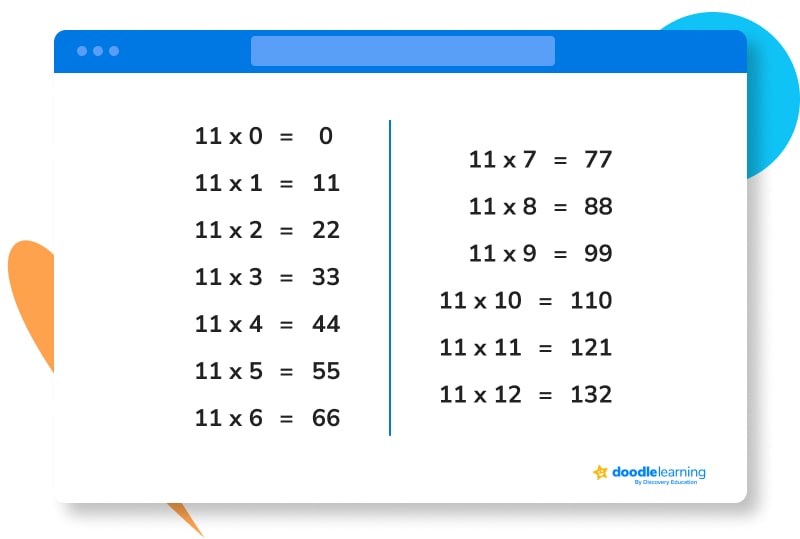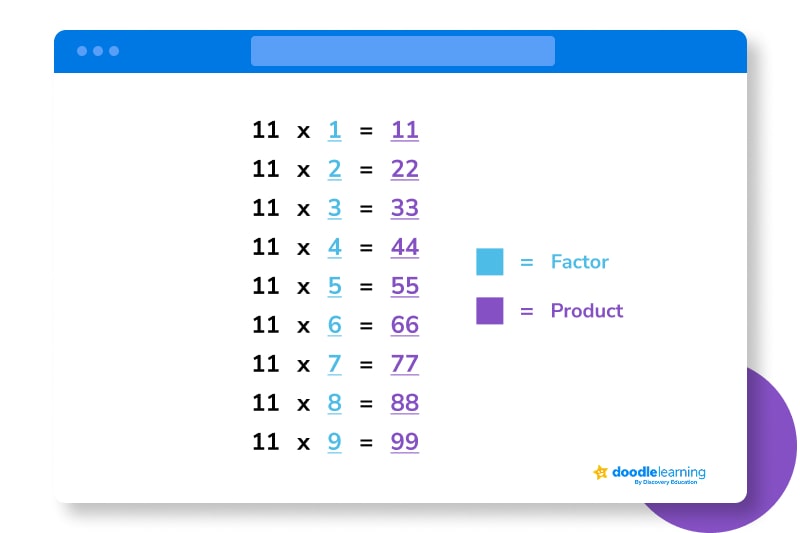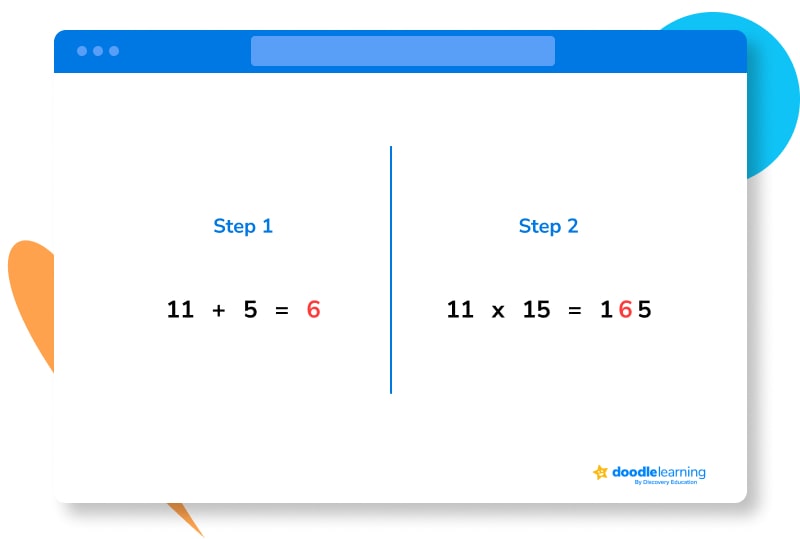


Author
Mhairi Sim
Published
May 2025



Author
Mhairi Sim
Published
May 2025



Author
Mhairi Sim
Published
May 2025


Key takeaways
Table of contents
When your learners reach year 4, it’s time to finish off the times table learning! This year, students will learn their 12 and 11 times tables.
While anything over the ten times table might seem daunting, there’s really no reason to fret. Not only is the 11 times table considered one of the easier times tables to learn, but many students learned their previous times tables up to 12. This means that only new learning for the 11 times table is 11 x 11 and 11 x 12!
That being said, we’ve got a few teacher-approved tips that’ll make the 11 times table a breeze for your learner and some practice questions for them to put these new skills to the test!

Unlock unlimited maths questions
Put your skills to the test with fun exercises + maths games that are proven to boost ability!
Try DoodleMaths for free!
Select a year group
Take a look at the numbers highlighted below; can you spot any patterns? The numbers run in a diagonal line across the 100-square, and each number in the table (up to 99) is just double the factor it relates to!

Learning the 11 time table up to 11 x 10 is relatively easy, but what about 11 x 11 and beyond?
Here are some tried-and-tested strategies that I teach to all of my learners tackling the 11 times table. Not only will these tips help your learner to remember the products of the 11 times table, they’ll also help kids in future problem-solving activities where they need to multiply larger numbers by 11!


This is the quickest and most commonly used method for learning products of the 11 times table up to 11 x 9.
There’s an equally quick and simple method for products of double-digit factors (11 x 10 and up). Let’s try this out with 11 x 15 as an example:
Step 1: Take the factor you are multiplying 11 by, and add these digits together. In this case, we’re multiplying 11 by 15, so we are adding together 1 and 5.
Step 2: Place your answer digit between the numbers of your factor, and voilà! You have your answer! In our example, we’ll place our answer of 6 between the numbers 1 and 5 to give us 165.

The distributive law of multiplication explains that it’s possible to break down a multiplication problem in order to simplify the calculation. This means that your learner can use their knowledge of other times tables to get answers to 11 times table problems.
Have your kiddo start by breaking down the problem into simpler multiplication calculations – for the 11 times table, this could be multiplying by 10 and 1, as in this example:

Once they’ve completed these calculations, they’re then ready to add their answers together to finish the problem.
Crucial to understanding this method is knowing that multiplying a number by 11 is the same as multiplying it by 10 and by 1, then adding these answers together.
This method works for larger numbers in the 11 time table, and other times tables too!
Above all else, the best way for your child to learn their 11 times table is with lots of practice! The interactive games and activities on our DoodleLearning maths practice app are a great way to incentivise your kiddo to spend time revising their times tables!
DoodleMaths is an award-winning app that’s filled with thousands of questions and games exploring multiplication, division and more! Plus, get free access to DoodleTables with any DoodleMaths subscription!
Designed by teachers, it creates each child a unique work programme tailored to their needs, doubling their progression with just 10 minutes of use a day. Try it for free!


Ready to give it a go?
Put your knowledge to the test with these no-risk practice problems to get you ready for the classroom!

Parents, sign up for a DoodleMaths subscription and see your child become a maths wizard!

Book a chat with our team
If you’d like to use Doodle’s browser version, please visit this page on a desktop.
To log in to Doodle on this device, you can do so through our apps. You can find out how to download them here: